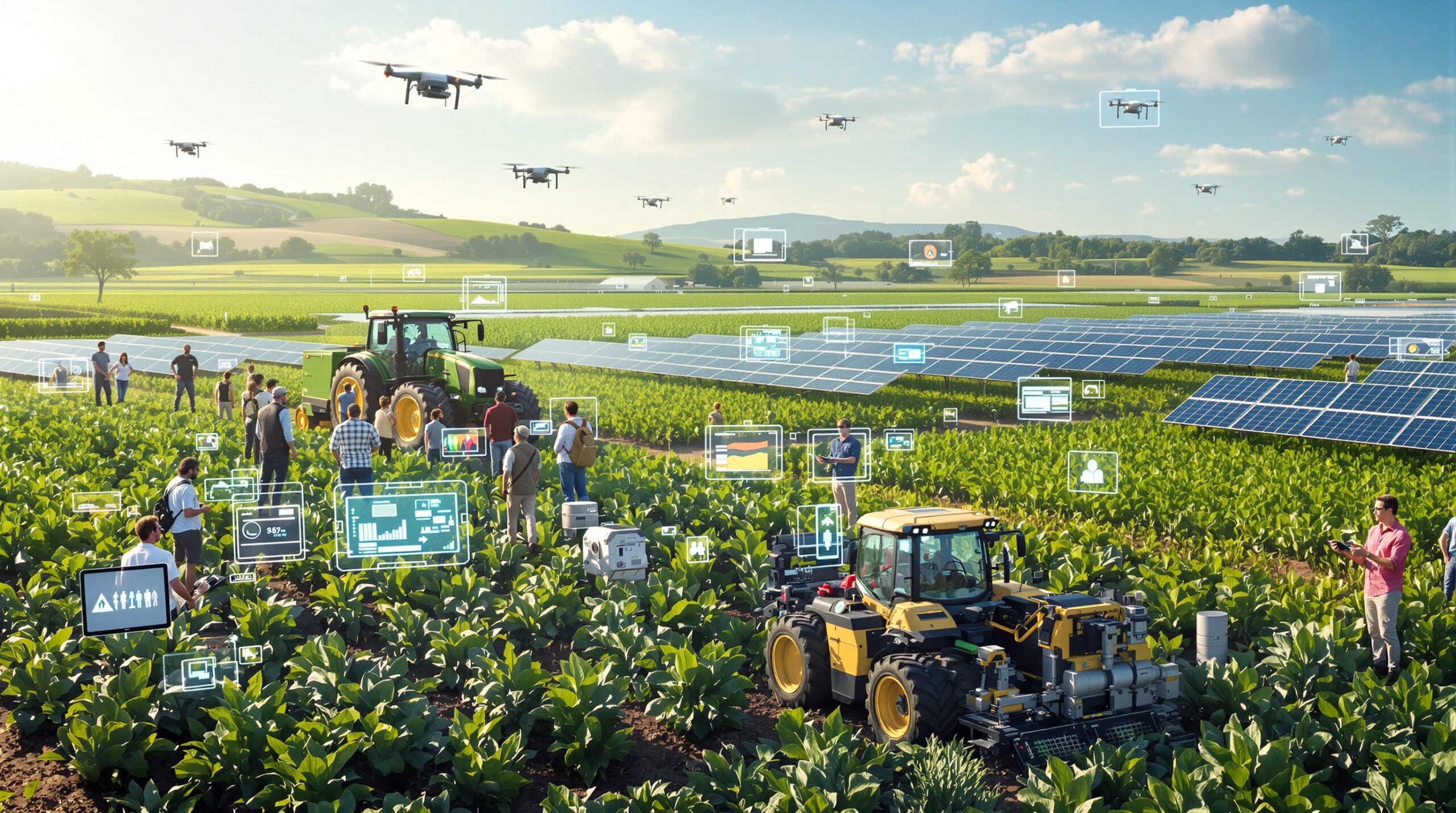Artificial Intelligence (AI) is rapidly transforming various industries, but its impact is perhaps most profound in agriculture. From crop management to supply chain optimization, AI technologies are redefining how food is grown, harvested, and distributed. As the global population increases and climate change presents new challenges, smart solutions are becoming essential.
Precision Agriculture Gets a Boost from AI
AI-powered systems are helping farmers make more informed decisions. Satellite imagery and drone data are analyzed in real time. These tools identify patterns in soil health, crop growth, and pest infestations with remarkable accuracy. Farmers can then act quickly to address issues, improving yields while conserving resources. Machine learning models can predict the best times for planting, irrigation, and harvesting. This approach reduces waste and maximizes productivity on every acre.
Data-Driven Decision Making
Sensors placed across fields collect vast amounts of data on weather, soil moisture, and plant health. Cloud-based platforms process this information using advanced algorithms. The results allow farmers to fine-tune their practices for every section of their land. By tailoring interventions, farmers reduce unnecessary chemical use and protect the environment. This data-driven strategy supports sustainable farming and better resource allocation.
Enhancing Crop Protection and Disease Management
AI is revolutionizing how growers detect and manage crop diseases. Machine vision technology scans leaves and stems for early warning signs. It can identify patterns invisible to the human eye and diagnose problems quickly. Early detection allows for timely interventions with less pesticide usage. Natural predators or targeted treatments can be deployed, minimizing damage and reducing costs for farmers.
Learning from Global Patterns
Global AI networks aggregate data from diverse regions and share insights instantly. This connectivity helps identify emerging pest threats or disease outbreaks around the world. Local farmers benefit from global data, adjusting their practices before problems escalate. Cross-region intelligence strengthens food security and supports collaborative solutions. The result is a quicker, coordinated response to agricultural threats.
Automation and Smart Machinery on the Farm
Autonomous tractors, planters, and harvesters are now commonplace in many fields. AI enables these machines to navigate and perform tasks accurately. They use sensors and cameras to avoid obstacles, ensuring every seed is planted correctly. These tools free up farmers for higher-level decision-making and labor efficiency. The integration of AI accelerates farming cycles and minimizes human error.
Robotics and Harvesting
Harvesting delicate crops, such as berries or tomatoes, once required careful human touch. AI-driven robots now handle these tasks efficiently. Their computer vision and gentle handling reduce spoilage and collect produce at peak ripeness. These advances support labor-strapped farming regions and meet the demands of expanding markets. Robotics ultimately promises higher profitability and produce quality.
Resource Conservation and Sustainability
AI helps farmers conserve water, fertilizers, and pesticides through precise application. Smart irrigation systems analyze weather forecasts and soil data to deliver water only where needed. This reduces waste and supports crops through droughts or heatwaves. Fertilizer placement becomes more targeted, avoiding runoff into waterways. The result is a healthier ecosystem and long-term soil productivity.
Reducing Environmental Footprint
As agricultural technology improves, pressure lessens on the environment. Data-driven decisions cut greenhouse gas emissions and fertilizer runoff. AI enhances the sustainability of both small and large-scale operations. This transformation aligns with consumer demand for environmentally conscious food choices and corporate sustainability goals. Technology-driven efficiency supports future generations while sustaining farmer livelihoods.
Transforming the Supply Chain and Market Access
Once crops leave the field, AI continues to play a crucial role. Machine learning predicts market demand, optimizing distribution routes and pricing strategies. Smart logistics platforms reduce food waste by aligning supply with real-time demand. Cold-chain monitoring uses sensors to track produce and alert stakeholders to spoilage risks. These innovations ensure fresher food reaches consumers and improves profitability for farmers and suppliers.
Empowering Smallholder Farmers
Digital platforms powered by AI are bridging the gap for small-scale producers. Mobile apps share market information, weather alerts, and best practices. Farmers can access financing, insurance, and buyers directly through their phones. This democratization of technology supports inclusive growth and helps rural communities thrive amid global changes.
Overcoming Implementation Challenges
Adopting AI in agriculture requires investments in infrastructure and education. Some farmers, especially in low-income regions, face obstacles to entry. High upfront costs for sensors, connectivity, and machinery can delay adoption. Recognizing these barriers, public and private programs are expanding training and access to financing. Gradually, more growers can benefit from advanced tools and data insights.
The Human Element Remains Vital
Despite automation, the judgment and experience of farmers are irreplaceable. AI provides data, but strategy and intuition remain essential. Technology and human expertise must work together to achieve the best outcomes. Ongoing collaboration between developers, scientists, and growers ensures that solutions are practical and scalable.
Looking Ahead: The Future of AI in Agriculture
Progress in artificial intelligence shows no signs of slowing down. Continuous improvement in machine learning algorithms opens new frontiers for farming efficiency. The integration of robotics, earth observation data, and deep learning could revolutionize how food is produced worldwide. Successful adoption depends on ensuring access and building farmer trust in digital solutions. This journey requires collective effort from industry, government, and communities.
As AI technologies mature, they promise to tackle pressing agricultural challenges and unlock greater productivity. By embracing innovation thoughtfully, the industry can feed a growing world while protecting natural resources. The ongoing partnership between humans and intelligent machines will define the agricultural landscape for decades to come.

